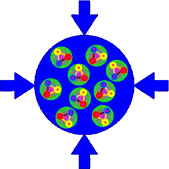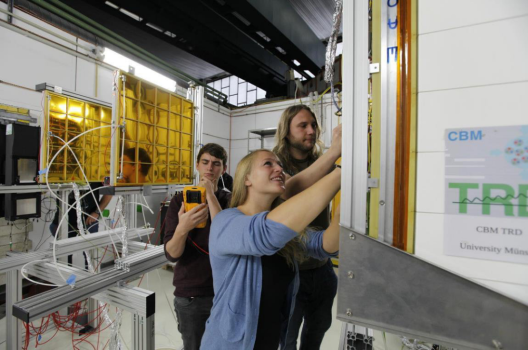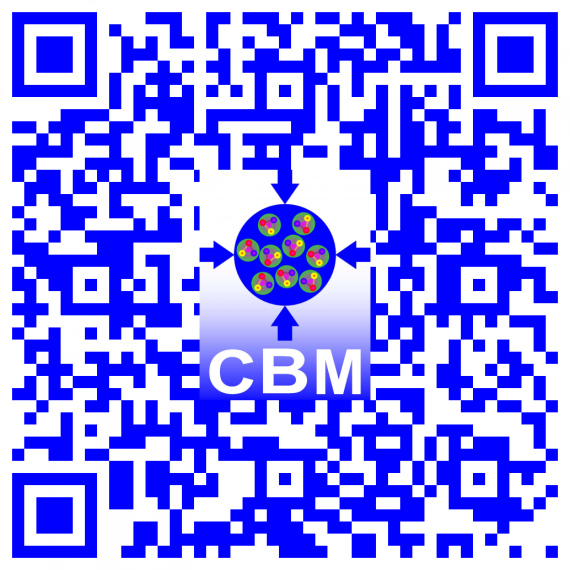
CBM - The "Compressed Baryonic Matter" experiment

Transition Radiation Detector (TRD) for the CBM-Experiment

A new multifunctional accelerator complex FAIR (Facilty for Antiproton and ion Reserach) will be built at Gesellschaft für Schwerionenforschung GSI in Darmstadt, where the CBM experiement will be one of the Day-1 experiments. For an up-to-date drone video of the construction site click here.
The CBM experiment will study the phase transition to the quark-gluon plasma QGP in which the quarks are no longer bound into protons and neutrons. The impact of the ions with the atoms of the film targets leads to very high temperatures and energy densities. So the formation of a quark-gluon plasma (QGP) is achived.
While at the Large Hadron Collider at CERN, very high temperatures (energy) and low particle densities are generated, CBM is able to measure high particle densities at low temperatures. This additional measurement will help to understand the transition between ordinary matter and the QGP. The here build detector is based on transition radiation: Crosses a charged particle the limit of two dielectric materials, it emits - depending on the speed and mass - photons in the field of X-rays. These photons are detected by a gas detector, together with the characteristic energy loss. The high collision rate places enormous demands on the readout rate and sensitivity of the detector or the electronics.
Contact
Prof. Anton Andronic (Room 221)
Prof. Christian Klein-Bösing (Room 205)

